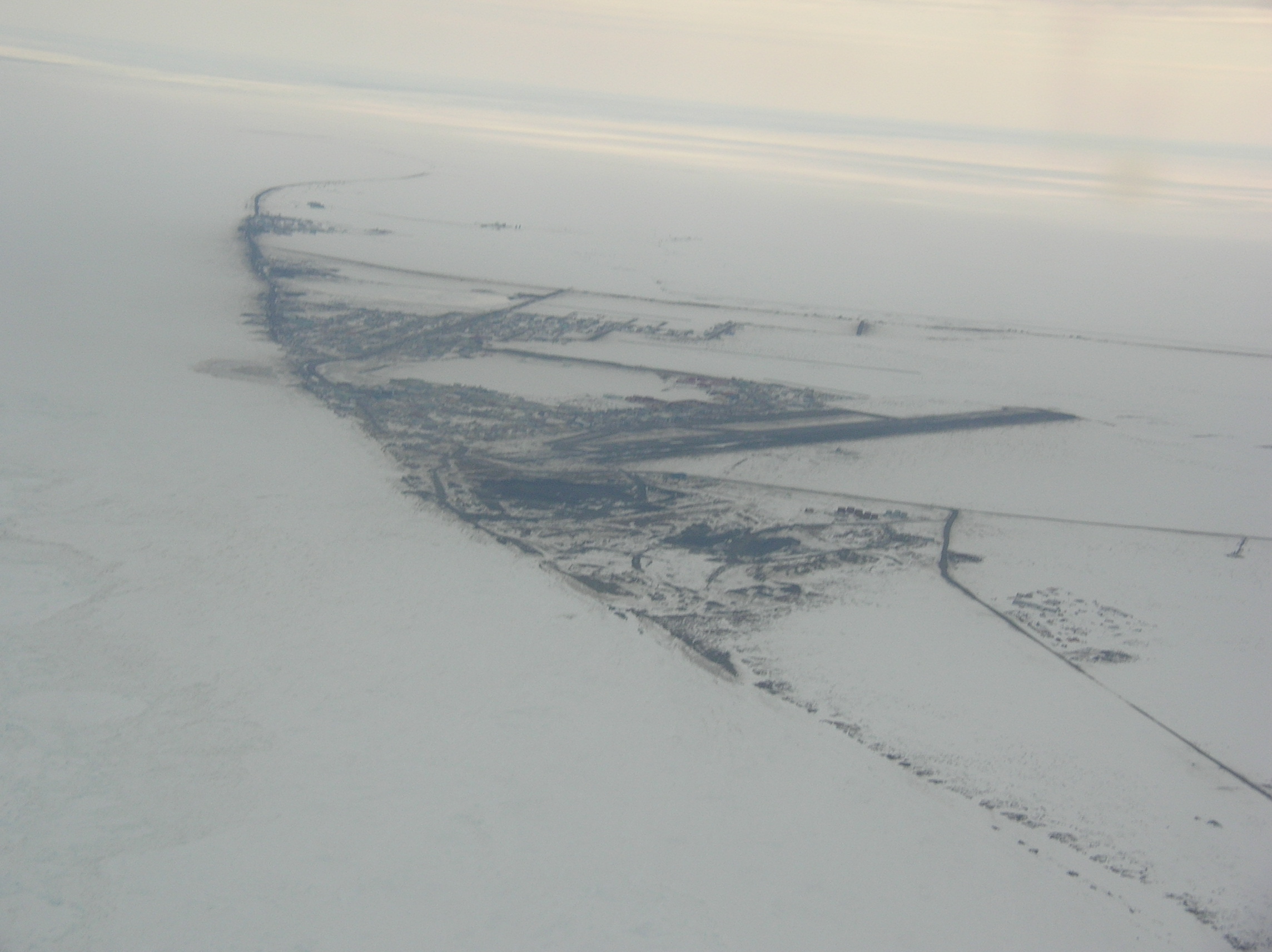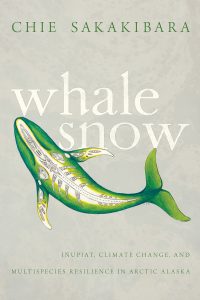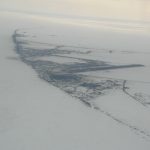November 10, 2020
In Whale Snow: Iñupiat, Climate Change, and Multispecies Resilience in Arctic Alaska author Chie Sakakibara uses multispecies ethnography to explore how the relatedness of the Iñupiat of Arctic Alaska and the bowhead whale forms and transforms “the human” through their encounters. Sakakibara shows how people of Arctic Alaska live in the world that intersects with other beings, how these connections came into being, and, most importantly, how such intimate and intense relations help humans survive the challenges of climate change. Today, Chie answers our questions.
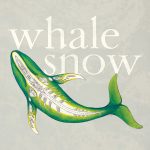
The artwork on the cover of your book is stunning. Please tell us more about the artist Nasuġraq Rainey Hopson.
Nasuġraq Rainey Hopson is an Iñupiaq artist and writer who was born and raised on the North Slope of Alaska. She is someone who I heartily admire for her deep commitment to her community through the promotion of Iñupiaq values, aesthetics, and environmentalism. As a dear friend, mentor, and collaborator, Nasuġraq kindly contributed the cover art, X-ray Whale, along with the original frontispiece and three illustrations included in Whale Snow. Her creations eloquently tell many stories, and they often point to a positive reciprocal relationship that goes across the boundary of humans and nonhuman animals, which gets intensified in our times of global climate change. This dynamism is the subject of Whale Snow.
Nasuġraq calls Anaktuvuk Pass (AKP) home, a beautiful village nestled in the foothills of the Brooks Range, and her days are filled with adventures with her daughter, husband, a small flock of chickens, a variety of types of artistic expression, and writing. She is also known as a groundbreaking Arctic gardening guru, and is the founder of America’s northernmost gardening project called “Gardens in the Arctic,” which has successfully grown fresh produce for her community since 2016. Visit Nasuġraq’s website, Nasuġraq Rainey Hopson: Iñupiaq Artist and Writer, to learn more about her career: https://www.nasugraqhopson.com/.
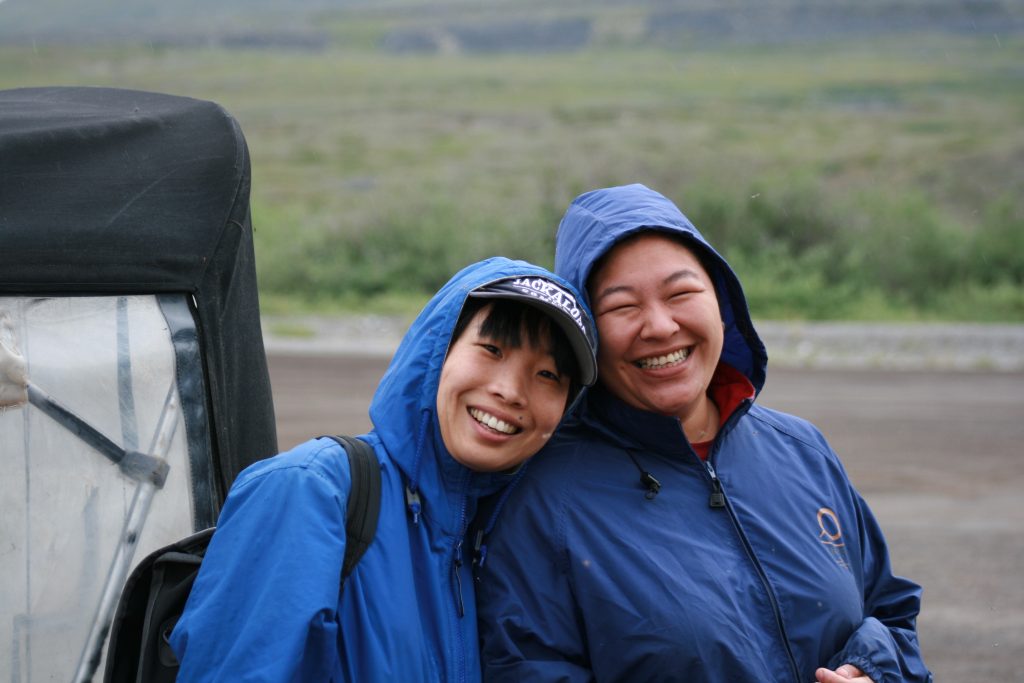
In the Arctic, climate, culture, and human resilience are connected through bowhead whaling. You write that climate change has disrupted this ancient practice. What are some of the implications of this disruption?
In Whale Snow, I explored how Iñupiat live their values in the midst of pervading modernity in relation to colonial encounters and ongoing social and environmental transformations. Each of their social principles is now threatened by myriad ramifications of climate change. For so many times, on so many occasions, and in so many places, I have witnessed how the joy of getting a whale has worked a miracle to transform human lives, experiences, and relations. At the same time, it suggests the costs of not getting any whales. Without the whales, social tensions rise. Without the whales, the meaning and order the whales bring to sustain the community gets diluted—no whale means no harmony and no assurance of community integrity. When the ocean rises, sea ice deteriorates, and the tundra thaws, the devastation of not having any whales is immeasurable, and at times results in social rupture through violence, alcoholism, substance abuse, depression, and unexpected death, just to name a few. This is why whaling remains the central idiom of Iñupiaq well-being and sovereignty. Whaling maintains social health and solidarity as the foundation of survival. This is why the responsibility of the whalers is so immense.
At this time of further uncertainties for subsistence, the temptation of not observing the community norms gets much closer to the surface of their social fabric. At the same time, however, in the face of heightening anxiety and stress, development of interpersonal and interspecies bonds fosters resilience that ultimately strengthens the people. Such resilience can be invigorated through proactive adaptation to change, which leverages tradition and culture in modernity. This process of adaptation often manifests in a form of multispecies reciprocity in Arctic Alaska, which deeply intertwines the humans with humans, humans with animals, and humans with the environment. In the face of heightening anxiety and stress, development of interpersonal and interspecies bonds creates resilience that ultimately sustains the people.
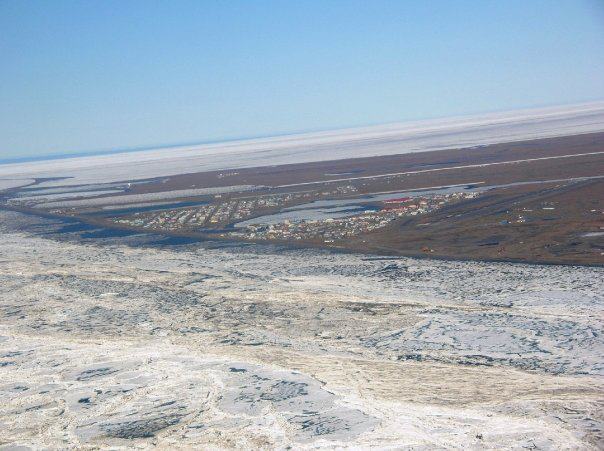
Global environmental change is all around us. In this time of ecological transition, why is exploring multispecies relatedness important?
As the COVID-19 pandemic and its interspecies origins underscore, we all live in the Anthropocene, an age in which humans and other animals are forced to live in closer proximity, share viruses, and confront new ones. Interspecies entanglements have increased their significance due to accelerating ecological dilemmas. My Iñupiaq mentors and collaborators taught me the importance of interspecies togetherness, or multispecies solidarity. Togetherness cultivates resilience, the capacity of individuals and communities to adapt, recover, and survive challenges and uncertainties. In this context, as Donna Haraway says, we must make kin as we are not the only important actors, and kin-making is a multispecies affair to cultivate resilience and mitigate vulnerability for survival. The Iñupiaq way of life clearly embodies this philosophy. Whale Snow is a journey to unpack such relations to better comprehend further entanglements between humans and nonhuman others as we are increasingly forced to live together.
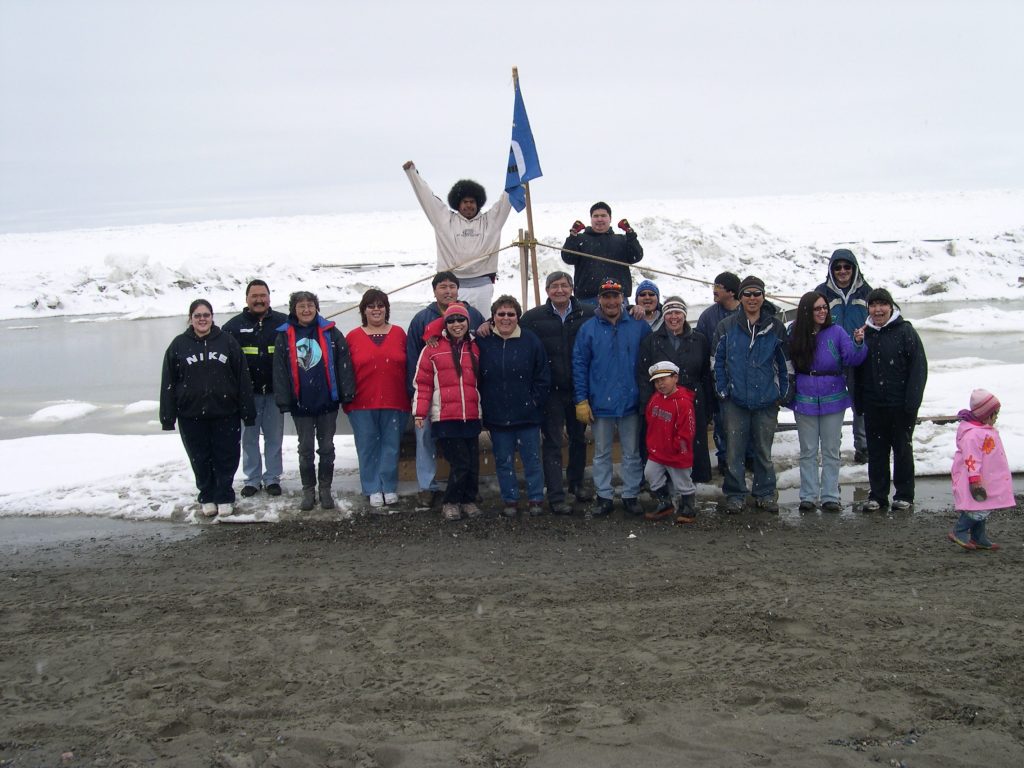
You open the acknowledgements by describing a promise you make to a community member to “not disappear” once you completed your fieldwork. Why was this so important?
Academic researchers in Indigenous communities have a fraught relationship with Indigenous communities with data mining, and this history remains inseparable from the legacy of colonialism and colonization. It was this reputation for outsider extraction that my mentor Martha Aiken was afraid of. She had seen how local knowledge and experience were conveniently extracted, simplified, and plugged into the market economy as medicine, books, popular music, and designs, or when they were instantly turned into private property after being detached from their appropriate cultural contexts. Rarely was a plan to benefit the community part of this enterprise. On my first day in her community as a graduate student, Martha asked me to swear that I would commit myself to cultivate a long-term relationship with her and her community before starting to work on my dissertation research. I agreed to make the commitment. Now, many years later, I am still in the process of earning my place. The process of relationship-building has opened many doors to me that would have otherwise stayed closed; it is obvious but not an exaggeration to say that this study could not have been written without community participation and co-authorship. Martha has since passed away, but as a faculty member at Oberlin College, I continue to share her wisdom with my students to educate future generations of scholars—both Indigenous and non-Indigenous—about the importance of social justice, research ethics, community benefit, collaboration, and reciprocity so the future scholars will never disappear. Whale Snow is a token of my humble reciprocity with Martha and the community that adopted me and considered and cared for me as their own. As a partial fulfillment of Martha’s mandate, I wrote this book to offer insights into the depth of Iñupiaq-whale relations, and especially how they intersect with Iñupiaq struggles to achieve cultural sovereignty through the whaling cycle, and in so doing exhibit resilience in the face of unrelenting impacts of global climate change.
What do you hope people take away from your work?
Indigenous vulnerability to climate change has been discussed extensively in the fields of public policy, political science, anthropology, and geography, but comparatively few studies have actually shed light on the ways in which people emotionally invest themselves in their entanglements with animals and environments to nurture resilience. In contrast, Whale Snow shares powerful and positive stories about Indigenous experiences coping with climate change. As climate change increases environmental and cultural uncertainties, it also intensifies Iñupiaq emotions and relatedness with the bowhead whale to seek out cultural activities that strengthen social identities and a politics of Indigenous sovereignty. In this sense, my narrative departs from studies that emphasize human vulnerability and instead serves as an ethnography of hope cultivated and entangled with interspecies relations.
This book lies at the intersection of my personal life and stories of America’s northernmost Indigenous society. My narrative is steeped in a deep long-term relationship between a culturally adopted Japanese woman in the two Iñupiaq villages and her adoptive family members, relatives, mentors, collaborators, colleagues, friends, and acquaintances. This is the story of the people and the bowhead whale, and at the same time, the story of my own life. My fieldwork has become synonymous with my personal growth and fulfillment as an adopted member of whaling crews through participation in everyday life in contemporary rural Alaska. In many different ways and contexts, my adoptive families and kin taught me that the Iñupiaq-whale relationship is a force of innovation and adaptation that now serves as a way to cope with social stress and the unforeseeable future. In other words, this book was germinated in my own process of becoming an Iñupiaq (meaning “a complete person”) through building a relationship with Iñupiat and their nonhuman kin, and I present this book as a humble offering for the people and whales who are connected through emotive bonds, words, stories, and songs that they have so generously bestowed upon me.
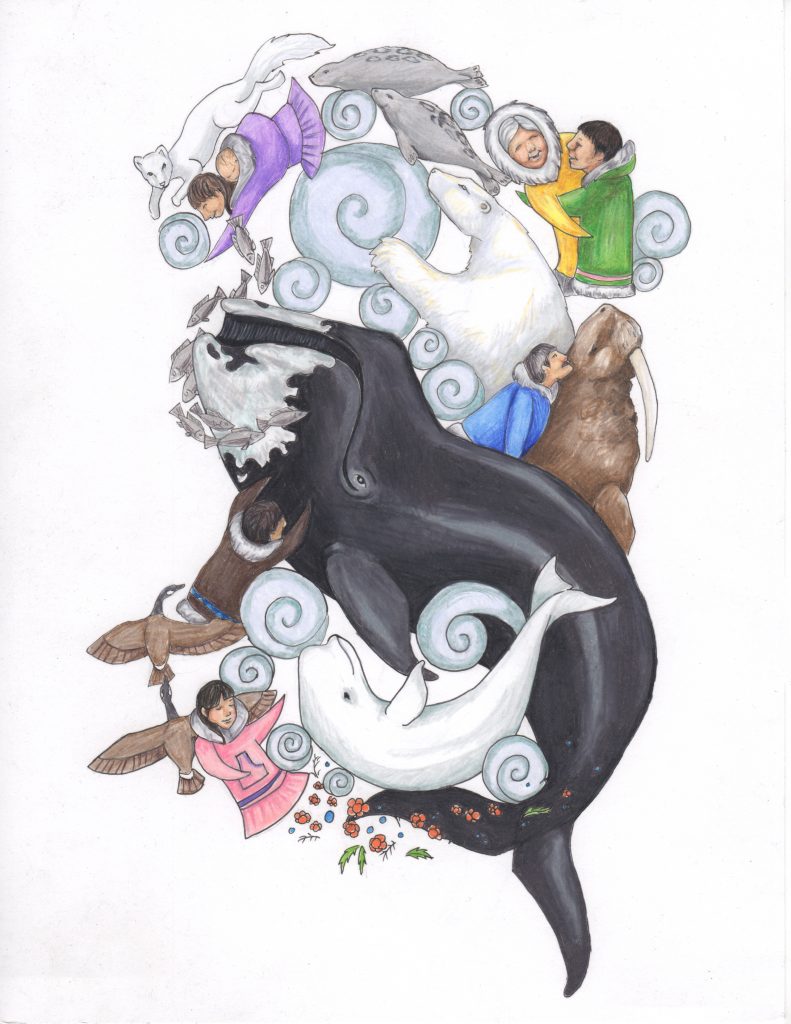
Chie Sakakibara is an assistant professor of environmental studies at Oberlin College. She was trained in cultural geography, art history, and Indigenous studies. Her work explores human dimensions of global environmental change among Indigenous peoples. Native to Japan, Sakakibara is a proud adoptive member of the Iñupiaq whaling community. Her love of humans and nonhuman animals manifests in her academic work as well as in her life with one human daughter and two canine sons.
All royalties accruing from sale of this publication go to the North Slope Borough Iñupiat History, Language, and Culture Commission.
All images in the post are are copyrighted. Do no reproduce without permission.
 The University of Arizona Press
The University of Arizona Press

